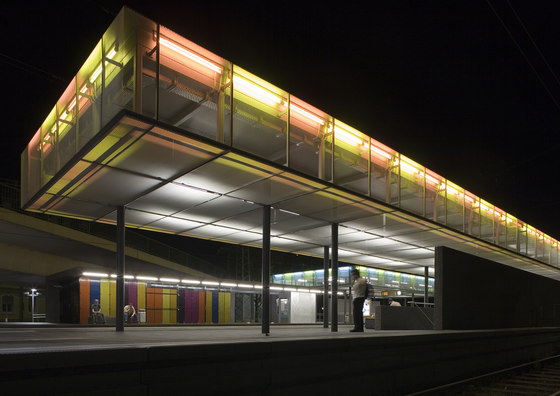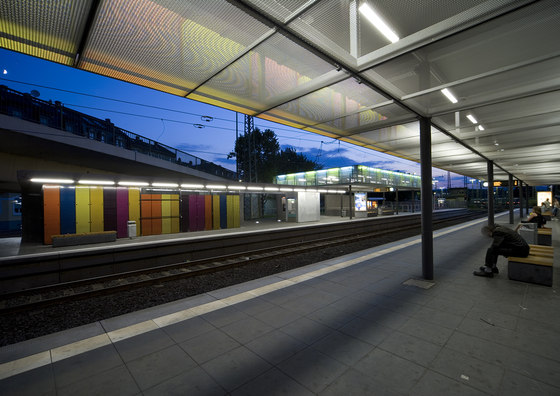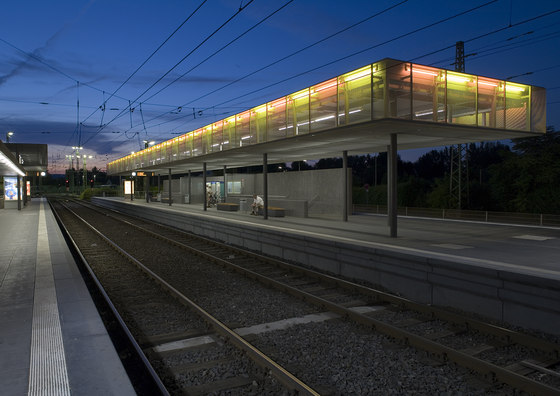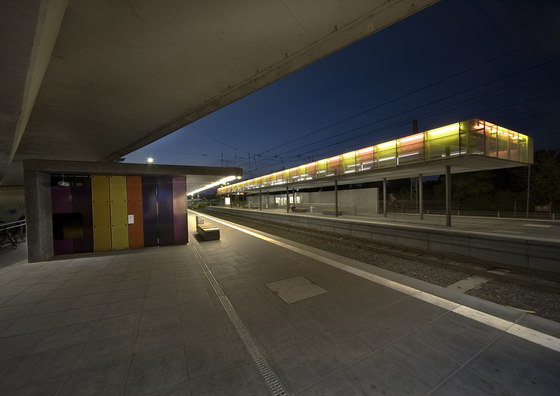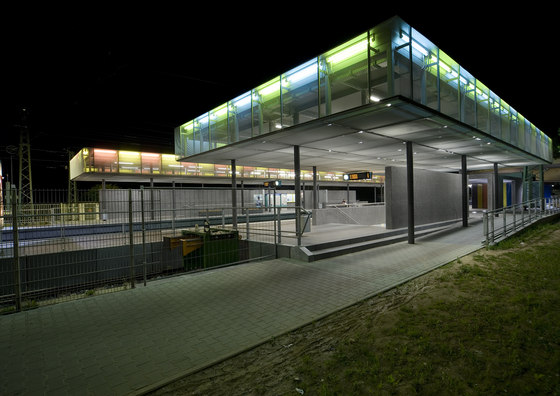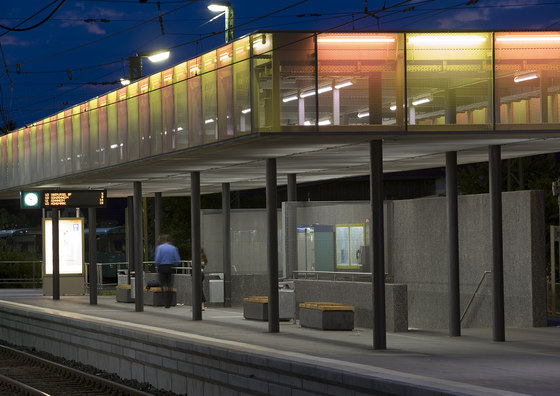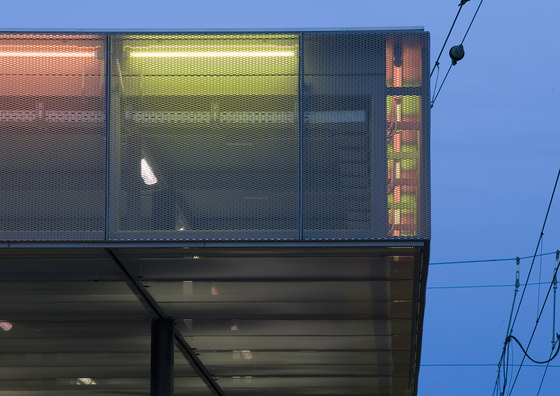The station was in need of a general renovation, as part of this process the main platform was raised to allow for disabled access. The station lies between major traffic arteries, crossing the southern side of the station is the large Maybach Bridge, to the east lies a sport complex including an outdoor swimming pool. A public bus station forms the western boundary of the site; while to the west and north are a series of housing blocks.
It as clear from the beginning of the design, that only a large clearly defined form would be able to produce the desired presence in a complex and confusing urban mix. This response is similar to that of the American artist Donald Judd, who placed large cubic figures in a variety of environments. Unlike Judd this cubic form sits in slender columns and functions as both a roof and a “signal”. The roof intentionally pays reference to the city works as providers of energy and a modern transport system while also acting as a beacon for the many thousand of passengers who pass through the station every day.
The station roof is a combination of a primary structure of steel beams resting on irregularly placed columns. The irregularity of these columns allows for access by stairs to a pedestrian tunnel while also providing a free space at the nodal points of pedestrian traffic. This primary structure is clad in industrial expanded Aluminium panels. Depending on the angle of view the roof appears as either transparent or closed and monolithic, if two oppositely adjacent panels are viewed simultaneously a moiré effect comes into play.
Light concept
Behind the expanded Aluminium panels are a series of standard fluorescent lamps. These are programmed to respond to the movements to the trains on each platform. As a train approaches the station the colour of the light changes from yellow to orange, while the train is stationary the colour remains constant. Once the train begins to leave the station the light reverts back to a yellow tone. The opposing platform is similarly programmed with the light changing from blue to green. Additional colour changes are also possible.
Kiosk
On the city bound platform a new fully glazed kiosk with the character of a small shop has been built. This glass cube is protected at night with metal mash panels behind which are coloured metal offering additional protection and once again paying homage to the colour pallet of Donald Judd. The kiosk has a large cantilevered concrete roof, which provides a dry area between the platform and the Maybach Bridge. The main concrete wall of the kiosk is executed in black exposed concrete that surface has a hammer finish.
Circulation
The renovated station has complete disabled access. Both platforms are reachable either by a pedestrian tunnel or by a protected over ground route underneath the Maybach Bridge.
Jury explanation: The light in Architecture Prize 2005 | Special recognition fort the project: Tube Station in Frankfurt-Heddernheim
The Jury was impressed by the confident design of this subway station of which large sections are above ground. The lightness of the roofs over the platforms derives not from the refined nature of the structure but from the fact that their solid volumes dissolve in a sense of light and transparency (expanded mesh).
Consequently, they have more the appearence of an additional level than of a platform roofing. This effect, together with the dynamic alternation of the light colours (the trains entering and leaving the station bathe the railway in changing light) lends the underground station high-profile significance as part of the urban landscape. Seldom is highly quality architecture to be found in such transportrelated buildings, but in this instance we have a highly successful and fascinating synthesis of design, material and light.
SYRA_Schoyerer Architekten
